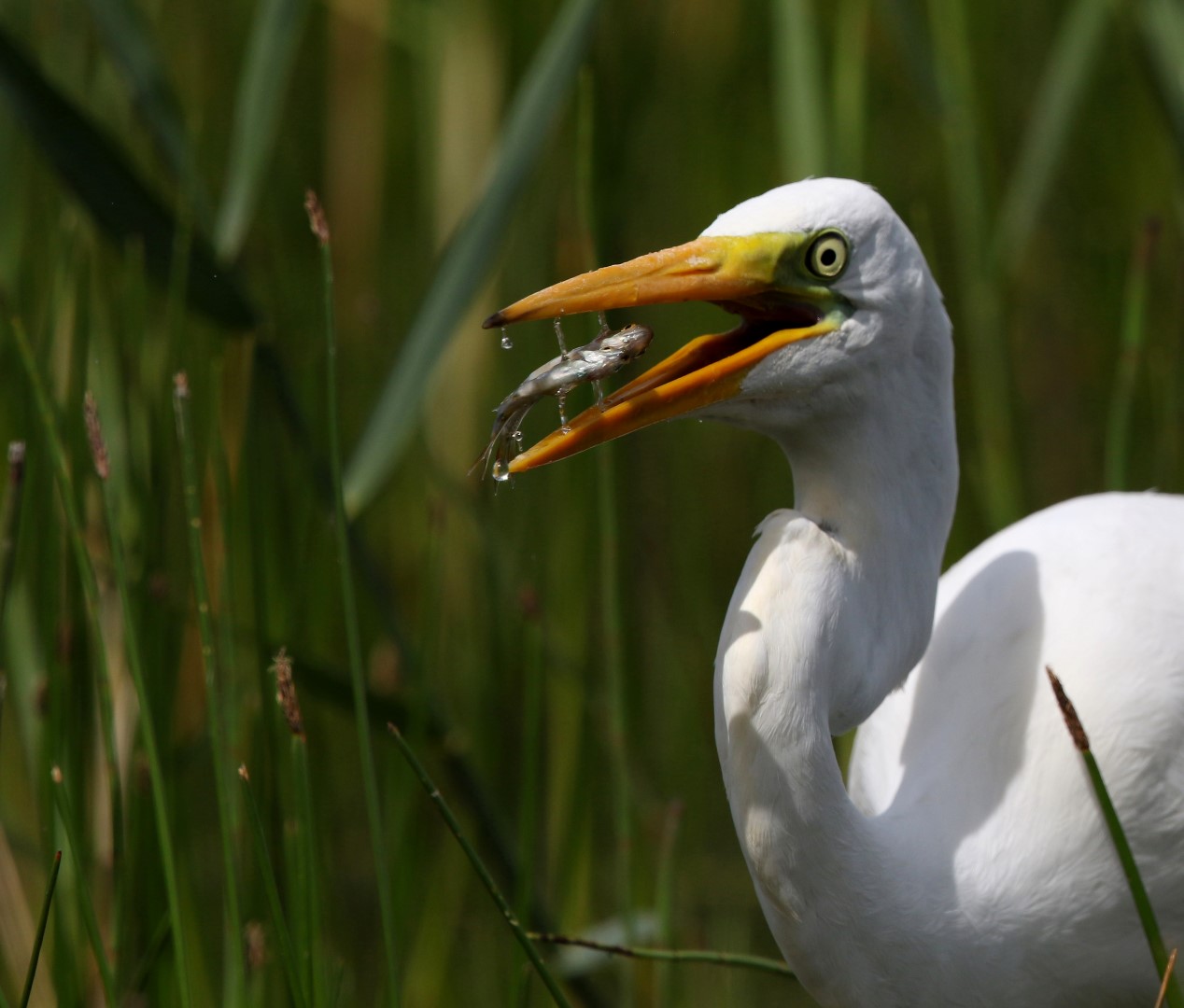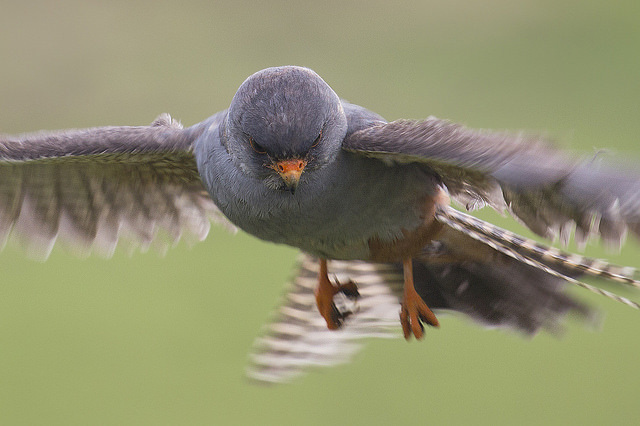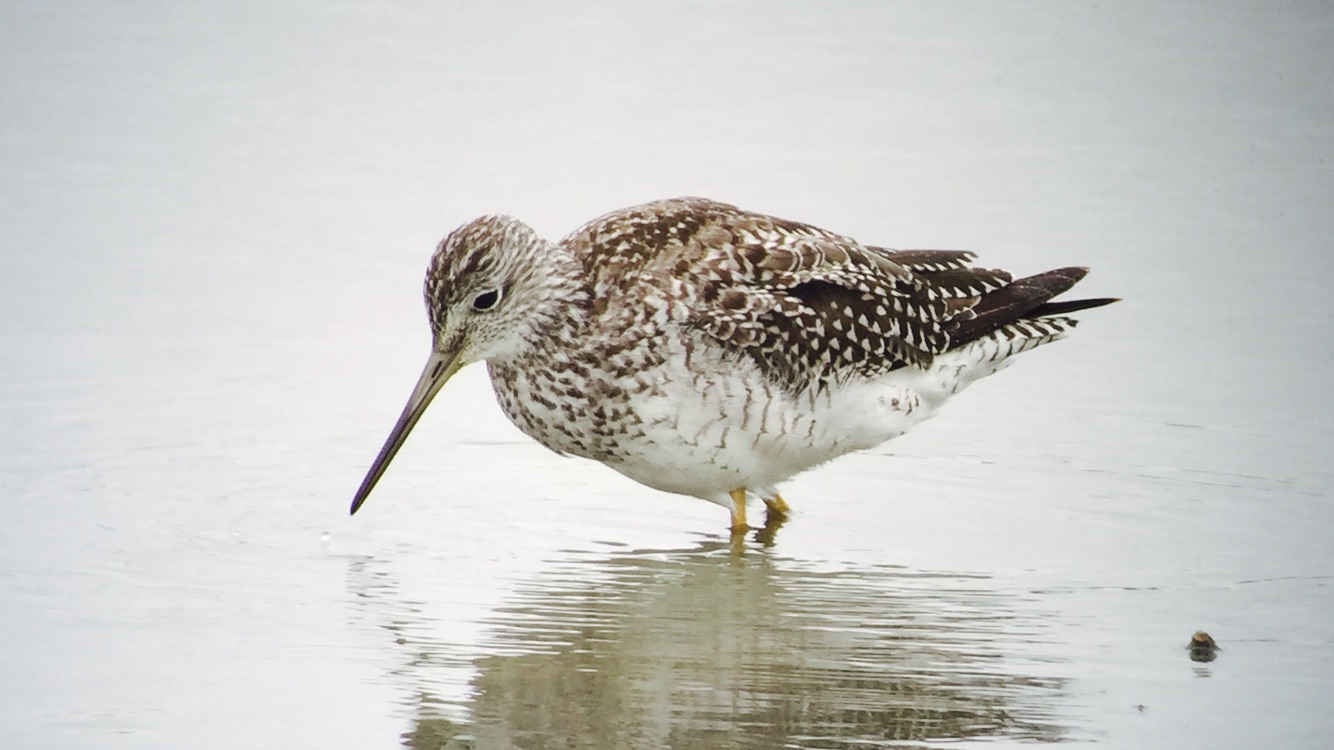The week at a glance
- Black-browed Albatross in Suffolk
- Late news of Black-headed Bunting and dead Cedar Waxwing in Pembrokeshire
- Hudsonian Whimbrel and Greater Yellowlegs remain
- Israel's first Senegal Thick-knee and Norway's first Pacific Diver appear
The second week of July tantalised and frustrated birders nationwide as a series of great records, none readily accessible, raised the usual 'what ifs' among British birders. Top of the pile was the 'German' Black-browed Albatross, which made an arguably long-overdue visit to the British east coast on Sunday afternoon. Pitching down on a freshwater pool near RSPB Minsmere's South Hide, in front of the extraordinarily fortunate Ian Salkeld and Peter Hobbs, the bird lingered for just over ten minutes before heading off south.
It was identified as the German bird on plumage features such as underwing pattern, and one wonders where it'll turn up next — of course the bird is no stranger to coastal wanderings and has been seen perched on harbour walls, flying up Danish beaches and so on...now that we know the bird has 'found' the British coast, let's hope for another appearance before too long. For now, whet your appetite by having a read of this article about the bird and feasting your eyes on the photo below (taken on Heligoland).

Black-browed Albatross, Germany (Photo: Pierre Nowosad)
Slightly less galling, but still quite gripping nonetheless, was news that the remains of a Cedar Waxwing had been found in St David's, Pembrokeshire, on 27 June. The grip factor was of course reduced by the fact that the bird had been found dead, but that's now four Cedar Waxwings this year, with none seen by more than a handful of people. Further belated news from Pembrokeshire concerned a male Black-headed Bunting on the path at St Justinian on 29 June — unlike the waxwing it was very much alive, but again birders missed out.
After the beautiful weather witnessed at the start of July, a return to more unsettled conditions this week resulted in encouraging early signs for seawatchers. A total of 13+ Greater and three Cory's Shearwaters passed Porthgwarra, Cornwall, on 13th, with two Greats past on both 12th and 14th; further Greats were noted from other sites in Cornwall as well as Pembrokeshire, Cork and Wexford. A Cory's flew past Malin Head, Co Donegal, on 8th, while others were noted in Wicklow, Cork and Devon, and from two Cornish localities. Both large shearwater species were seen from Scilly pelagics, while the only Sabine's Gull was at sea off Skye, Highland.

Sabine's Gull, Staffin Bay, Skye, Highland (Photo: Nick Davies)
The identification of Blagdon Lake's Lesser Scaup was firmed up this week and the bird was still present on 14th. The American Wigeon was last seen at Old Moor, S Yorks, on 8th, with presumably the same seen at North Cave Wetlands, E Yorks, on 9th. A Green-winged Teal was reported from Caerlaverock, Dumfries & Galloway, on 10th — whether it relates to the usual bird is unclear. Interestingly, three Ruddy Shelducks at Cley, Norfolk, preceded a trio briefly at Stanwick Gravel Pits, Northants, early on 14th, which were presumably those that later touched down in the Staffordshire section of Middleton Lakes. Presumably records from the three sites concern the same individuals, following an interesting trajectory — possibly Continental birds? Three Scottish Surf Scoter were the pick of the seaduck: a drake at Lunan Bay, Angus & Dundee, on 9th followed by drakes off Ballochroy, Argyll, from 10–13th and Blackdog, Aberdeenshire, on 11th.
A Purple Heron was a new discovery at King's Fleet, Suffolk, on 14th, while the adult Night Heron could still be seen occasionally at Ham Wall, Somerset, to 9th. The Little Bittern at Old Moor, S Yorks, was last seen there on 9th and seemingly hopped over to Swillington Ings, W Yorks, on 11–12th before returning to Old Moor on 14th — that is unless there are two elusive individuals present. Three Great White Egrets over Ryall, Worcs, on 11th was a county record count; meanwhile the returning adult was back at Blashford Lakes, Hants, from 10th and a juvenile showed particularly well at Kenfig Pool, Glamorgan. Reports of Glossy Ibis in Suffolk and White Stork in Hampshire were not substantiated beyond the initial messages.

Little Bittern, Swillington Ings, West Yorkshire (Photo: Steve Woulds)

Great White Egret, Kenfig NNR, Glamorgan (Photo: Jeff Slocombe)
A Black Kite was over Upton Towans, Cornwall, on 10th, while reports of up to four Honey Buzzards from Swanton Novers watchpoint, Norfolk, on 10th and 11th were surprising. The pair of Montagu's Harriers continued to show well at Blacktoft Sands, E Yorks. A young male Red-footed Falcon showed stunningly well at Chatterley Whitfield, Staffs, from 9th and was one of the most popular birds of the week, as well as the first twitchable county record for 42 years!

Red-footed Falcon, Chatterley Whitfield, Staffordshire (Photo: Ivan Ellison)

Red-footed Falcon, Chatterley Whitfield, Staffordshire (Photo: Neil Hughes)
Aside from a brief stretch of its wings when it flew past Selsey Bill on 12th, the Hudsonian Whimbrel remained loyal to Pagham Harbour, W Sussex, to 13th at least. It almost goes without saying that the Greater Yellowlegs was still at Titchfield Haven, Hants, all week, while late news concerned a Terek Sandpiper suppressed at Burnham Deepdale, Norfolk, from 25 June to 1 July and apparently again there from 5–7 July. Following the sad news that the nest was predated earlier in the season, at least one Black-winged Stilt remains at Cliffe Pools, Kent. A Temminck's Stint was at Rutland Water from 13th, while the Perthshire bird was still at Vane Farm on 11th, and the Beacon Ponds White-rumped Sandpiper was also still there that day. A Pectoral Sandpiper was at Low Newton-by-the-Sea, Northumberland, on 9th, another was on Tiree on 10th and a third at Caerlaverock, Dumfries & Galloway, from 10–13th. A male Red-necked Phalarope touched down on North Ronaldsay, Orkney, on 10–11th, while Titchwell's second Spotted Crake in as many summers was noted on 12th.

Greater Yellowlegs, Titchfield Haven NNR, Hampshire (Photo: Calum Lamont)

Pectoral Sandpiper, Tiree, Argyll (Photo: John Bowler)

Spotted Crake, Titchwell RSPB, Norfolk (Photo: Neil Rendall)
A Gull-billed Tern briefly visited Cley, Norfolk, on 12th but an altogether more co-operative individual was found that day at Kingsteignton, Devon, the latter lingering and showing well to 14th. Kent's Bonaparte's Gull looks set for another extended stay and was still at Oare Marshes all week; Ring-billed Gulls remained in Cornwall and Co Kerry, though the latter bird did wander to Fenit on 8th before returning to its usual haunt at Tralee Bay Wetlands. Yellow-legged Gulls are now arriving in force, with juvenile birds beginning to pop up around the country; one even made it across the Irish Sea to Kilcoole, Co Wicklow, on 9th.

Gull-billed Tern, Kingsteignton, Devon (Photo: Ted Pressey)
A Hoopoe flew over Longham Lakes, Dorset, on 9th and an Alpine Swift steamed through Spurn, E Yorks, on 8th. The long-staying Red-rumped Swallow continued to zip about over Lerwick, Shetland, to 13th at least. The 10 European Bee-eaters were last noted at Theberton, Suffolk, early on 10th, after which they seemingly split up (four at Eastbridge and five at Minsmere late morning) before disappearing. Further records came from Beachy Head, E Sussex, and Durlston, Dorset, on 9th, with two flying over Cheshire Oaks Retail Park near Ellesmere Port that evening; on 10th two flew over Portland, Dorset, with single flyovers from Bucklesham and Alderton (both Suffolk). At least three over Sandwich Bay, Kent, late on 10th could have been some of the Suffolk birds; interestingly there were no further reports for the remainder of the week.

Bee-eater, Theberton, Suffolk (Photo: Jon Evans)

Bee-eater, Theberton, Suffolk (Photo: Chris Mayne)
All good things must come to an end, and that certainly applied to the Melodious Warbler near Hampton in Arden, W Mids, which had been holding a lonely vigil in its favoured hedgerow for exactly a month by its last day in residence on 11th — alas there was no sign from 12th onwards. A male Red-backed Shrike at South Huish Marsh, Devon, on 9th didn't linger, while a Rose-coloured Starling was found tackling fat balls in a resident's garden at Garrabost, Lewis, on 8th. One of the best finds of the week was what looks to be a male Hornemann's Arctic Redpoll, which was favouring gardens at Burravoe, Yell, Shetland, on 11th only.

Hornemann's Arctic Redpoll, Burravoe, Yell, Shetland (Photo: Dougie Preston)
Western Palearctic news
Norway's first Pacific Diver was a nice discovery near the hotspot of Farsund, Vest-Agder, on 12th — the area also attracted a first-summer Franklin's Gull on 10th. Meanwhile a first-summer Ivory Gull flying south at Harboøre, in north-west Denmark, was unseasonable on 10th.

Pacific Diver, Norway (Photo: Tor Olsen)
The first Senegal Thick-knee for Israel was expertly identified at Ma'agan Michael on 8th but had surprisingly moved on by the following day; it continues the country's excellent spring and summer, with one of its other recent highlights — the young Bateleur — still near Gal'on on 11th. It's remarkable to think Senegal Thick-knee is so rare away from Egypt's Nile Valley but a combination of its sedentary nature and similar appearance to Stone-curlew presumably both contribute to the scarcity of extralimital records.

Senegal Thick-knee, Israel (Photo: Rony Livne)
The Black-browed Albatross seen in Suffolk on Sunday (12th) had been noted on Heligoland, Germany, on 7th and at Ribe, Denmark, on 8th. A Blue-cheeked Bee-eater was at Pori, Finland, on 11th, while a Steppe Eagle was seen Vila Franca de Xira, Lisbon, Portugal, from 8–12th at least and the Pied Crow remained not too far away at Cabo Espichel, Setúbal.


